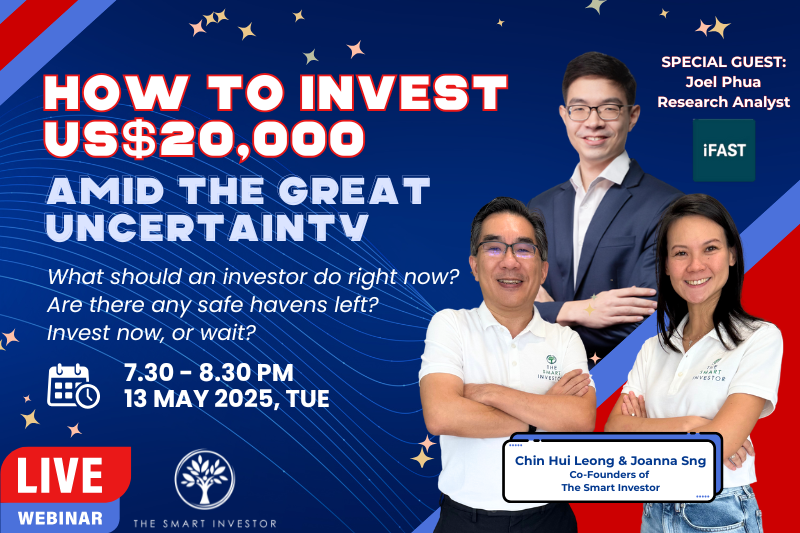Real estate investment trusts (REITs) are often seen as a reliable source of income for investors.
But that does not mean that you should simply go buy the REIT with the highest yield.
There is a problem with choosing REITs purely based on how cheap they are. That’s because a cheap REIT may be facing problems that could lead to them producing much lower dividends in the future.
Cheap for a reason
For example, let’s assume you bought Sabana Shariah Compliant REIT (SGX: M1GU) five years ago.
Back then, Sabana Shariah REIT had a dividend yield of around 7.5% and was paying a dividend of S$0.0774 per share. By all accounts, that is a handsome yield.
But today, Sabana Shariah REIT’s dividend is just S$0.0286 per share. Your dividend yield, based on the price you initially paid for the REIT and the dividend today, would be just 2.8%.
Now, let’s assume you had bought Mapletree Commercial Trust (SGX: N2IU) five years ago instead, at a dividend yield of 5.5%. That’s lower than what Sabana Shariah REIT offered.
Mapletree Commercial Trust’s dividend five years ago was also S$0.0774 per share. But today, its dividend has grown to S$0.0927 per share. Your dividend yield, based on the price you initially paid for Mapletree Commercial Trust and the dividend today, would be 6.6%.
REITs that can feed you for life
When choosing REITs to invest in, never look at just how high their dividend yields are. There are many other factors to consider.
As background, I helped to develop the investment framework for a Singapore-REIT-focused investment newsletter with The Motley Fool Singapore during my tenure with the company.
The newsletter had delivered good investment returns, so I thought I could offer some useful food-for-thought here.
The REIT newsletter was launched in March 2018 and offered 8 REIT recommendations.
As of 15 October 2019, the 8 REITs’ average return (including dividends) since the newsletter’s inception was 28.8%. In comparison, the Straits Times Index’s return (including dividends) was -3.1% over the same time period.
The average return (including dividends) as of 15 October 2019 for all Singapore-listed REITs that I have data on today that was also listed back in March 2018 was 17.5%.
The investment framework we used had four key pillars.
First, we looked out for long track records of growth in gross revenue (essentially rent the REITs collect from their properties), net property income (what’s left from the REITs’ rent after paying expenses related to the upkeep of their properties), and distribution per unit.
A REIT may fuel its growth by issuing new units as currency for property acquisitions and dilute existing unitholders’ stakes. As a result, a REIT may show growth in gross revenue, net property income, and distributable income, but then have a stagnant or declining distribution per unit. We did not want that.
Second, we looked out for REITs with favourable lease structures that feature annual rental growth, or REITs that have demonstrated a long history of increasing their rent on a per-area basis. The purpose of this pillar is to find REITs that have a higher chance of being able to enjoy organic revenue growth.
Third, we looked for REITs with strong finances. In particular, we focused on the gearing ratio (defined as debt divided by assets) and the interest coverage ratio (a measure of a REIT’s ability to meet the interest payments on its debt).
We wanted a low gearing ratio and a high-interest coverage ratio. A low gearing ratio gives a REIT two advantages: (a) the REIT is likelier to last through tough times; and (b) the REIT has room to take on more debt to make property acquisitions for growth.
A REIT with a high-interest coverage ratio means that it can meet the interest payments on its borrowings without difficulty. At the time of the REIT newsletter’s launch, the eight recommended-REITs had an average gearing ratio of 33.7%, which is far below the regulatory gearing ceiling of 45%.
The eight recommended-REITs also had an average interest coverage ratio of 6.2 back then.
Fourth, we wanted clear growth prospects to be present. These prospects could be in the form of newly-acquired properties with attractive characteristics or properties that are undergoing redevelopment that have the potential to deliver higher rental income in the future.
Get Smart: REITs assemble!
It’s important to note that there are more nuances that go into selecting REITs and that not every REIT that can ace the four pillars above will turn out to be winners.
In fact, one of the eight recommended REITs actually generated a loss of 17% from the newsletter’s launch to 15 October 2019. The experience of the REIT newsletter shows just how crucial diversification is when it comes to investing, not just in REITs, but in the stock market in general too.
But at the very least, I hope what I’ve shared can be useful in your quest to invest smartly in REITs.
To sum up, keep an eye on a few factors:
-
-
- Growth in gross revenue, net property income, and crucially, distribution per unit.
- Low leverage and a strong ability to service interest payments on debt.
- Favourable lease structures and/or a long track record of growing rent on a per-area basis.
- Catalysts for future growth.
- Don’t forget to diversify!
-
Good luck!
If you’d like to learn more investing concepts, and how to apply them to your investing needs, sign up for our free investing education newsletter, Get Smart! Click HERE to sign up now.
None of the information in this article can be constituted as financial, investment, or other professional advice. It is only intended to provide education. Speak with a professional before making important decisions about your money, your professional life, or even your personal life. Disclosure: Chong Ser Jing owns shares in Mapletree Commercial Trust.




